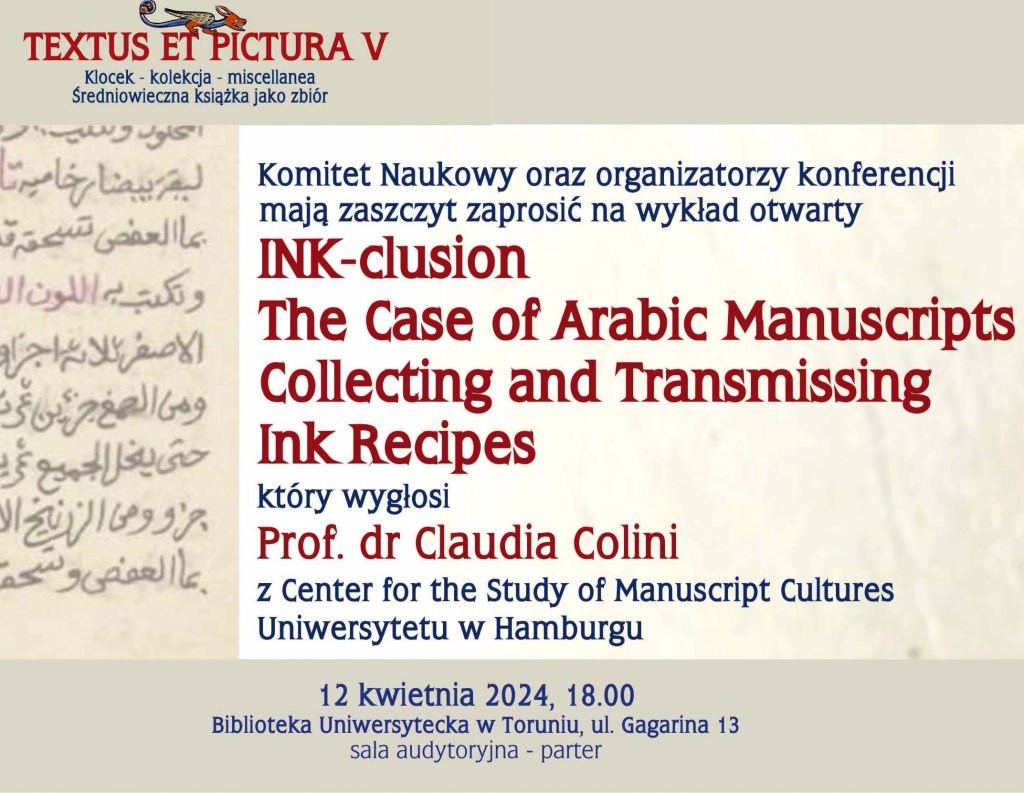
Claudia Colini jest młodszym profesorem archeometrii w Instytucie Archeologii i Historii Kultury Starożytnej Morza Śródziemnego oraz kierownikiem Mobilnego Laboratorium Klastra Doskonałości „Understandig Written Artefacts” na Uniwersytecie w Hamburgu w Niemczech. Z wykształcenia jest konserwatorem książek specjalizującym się w islamskich rękopisach i ich materiałach. W 2018 r. obroniła doktorat z archeometrii w CSMC na Uniwersytecie w Hamburgu, na podstawie rozprawy zatytułowanej: „Od przepisów do analizy materiałów: arabska tradycja czarnych atramentów i powłok papierowych (IX-XX wiek)”. Następnie pracowała w BAM (Federalnym Instytucie Badań i Testowania Materiałów) w Berlinie. Jej obecne projekty badawcze w ramach Klastra Doskonałości koncentrują się na współistnieniu różnych nośników pisma i atramentów we wczesnych wiekach islamu w Egipcie.
______________________________________________________________
ABSTRACT
All over the world a great importance is given to calligraphy and the arts of the book, so much that they have been the objects of letters and poetry, and of treatises and recipe books. In the Arabic-speaking world in particular, the nature of such texts varies from passionate poetry to literary exercises and collections of mirabilia meant to impress lovers, friend and the courts, to records of professional knowledge, addressed to scribes, secretaries, calligraphers, bookmakers, and even alchemists, physicians and charlatans.
Despite the obvious differences motivated by the audience, the basis of these texts is a sequence of recipes, more or less structured in thematic chapters, independently from the language or the culture they belong to. Interestingly, such basic units are not stable in the tradition of a single text: the order of the recipes can change, as well as their number and their content. Additionally, different texts may share the same recipes. This fluid and active transmission results in a network of influences between treatises and recipes collections, and of individual interventions made by copyists and scribes, which restructured the overall texts, enlarged or abridged the list of recipes, amended and commented on the single units.
The manuscripts hosting such texts also reflect their transmission and the different uses they had in specific contexts. Single text manuscripts, multiple text manuscripts, composite manuscripts including codicological units made of several quires or of a singular leaf, testify the variety of the modalities of copy and preservation they had. The layout and materials used to copy the texts, as well as the additions in the margins, also show the copyists choices and can help understand the context of use.
If codicology can already provide valuable information concerning the production and transformation of these manuscripts, archaeometry can add additional data related to the inks, pigment and writing supports used, identifying the material layers characterising these codices.
In this paper, I will present some examples of Arabic manuscripts sporting collections of ink recipes and treatises on the art of the book, and discuss how, from the combination of codicological and archaeometrical analysis, it was possible to understand not only the phases of production, transformation and handling of these codices but also the formation and context of use of the texts.



